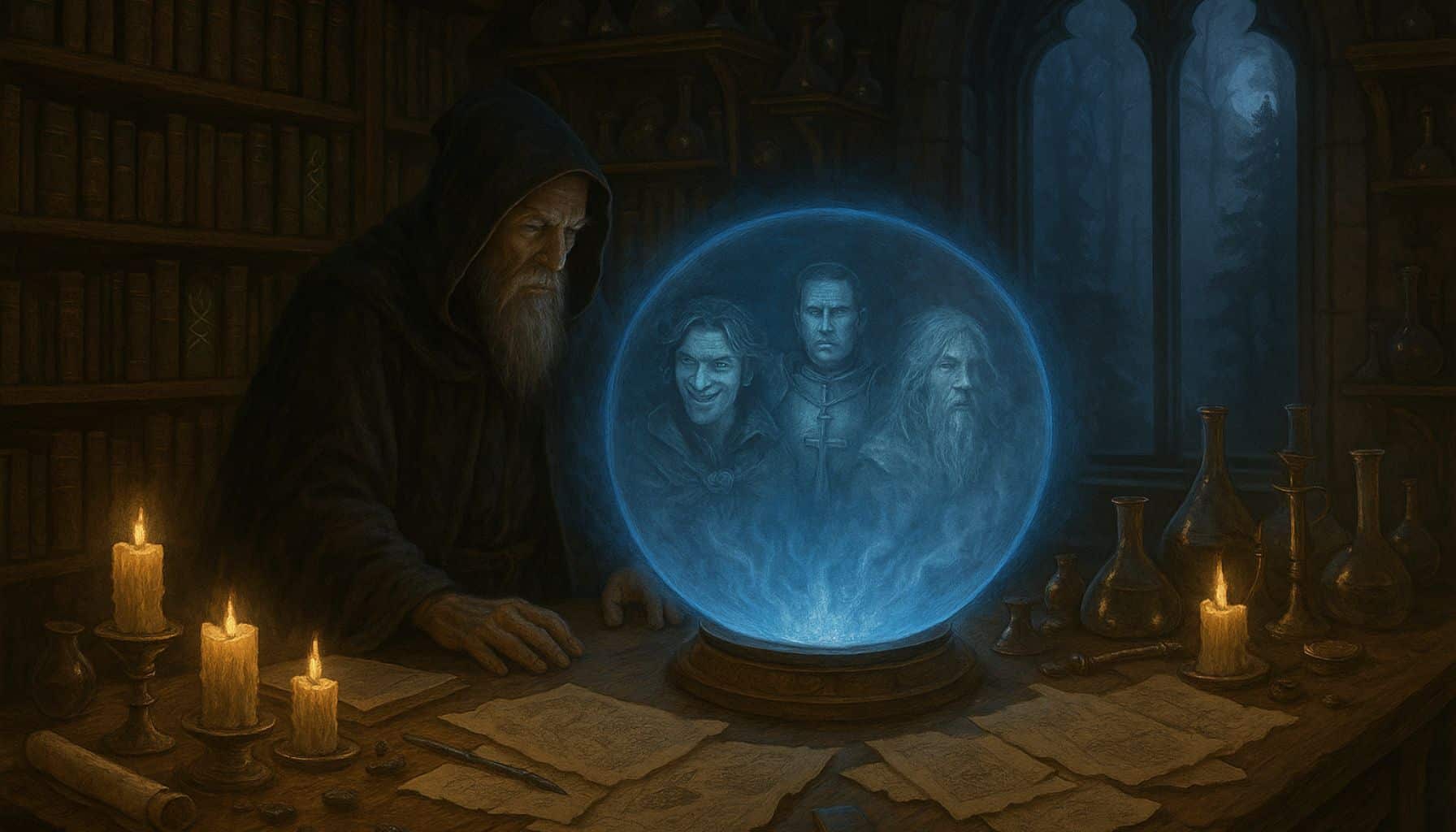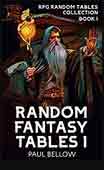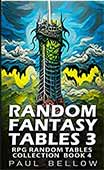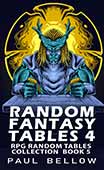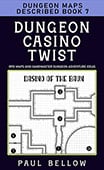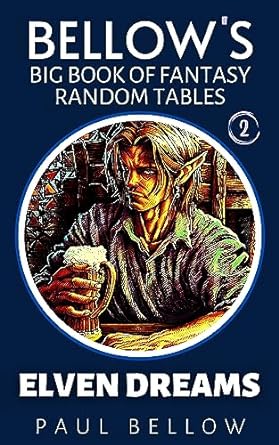In the labyrinthine alleys of tabletop roleplaying, Dungeons & Dragons reigns as a domain of self-invention and wild storytelling. At its core, the sprawling machinery of D&D leans heavily on the concept of alignment, a system that slices up morality and ethics into a nine-square grid, forming the invisible boundaries for every hero, villain, and ambiguous stranger who steps onto the stage. Lawful, Neutral, Chaotic. Good, Neutral, Evil. Each axis wields a peculiar sort of gravity, drawing characters into distinct orbits that shape not only their actions but also the deepest layers of their personalities and ambitions. Alignment-based backstory generators have emerged as a response to the modern player’s craving for complexity, blending black code and gray morality to help create characters who live and breathe within the tensions their alignments demand.
Crafting a backstory in D&D, especially one tied intimately to alignment, demands that players wrestle with hard questions. Why did my Warlock sign that infernal pact? What does a Lawful Good Paladin lose every time the city’s corruption bleeds under his shining boots? The interaction between a chosen alignment and a character’s history is not just mechanical. It’s a living, thematic fuse that burns through every session. The axis of Law and Chaos infuses choices with a flavor unique to structured societies or anarchic existence, while the Good and Evil spectrum shades every ambition and motivation. Here, alignment becomes both a template and a crucible, forging the convictions and contradictions that define truly immersive characters. Without thoughtful integration, backstories fall, dissolving into generic motivation or inconsistent behavior.
Alignment, in its ideal form, acts as a lodestone for the imagination, not a shackle. Yet, many adventurers (particularly new initiates) find themselves adrift in a maze of tropes, predictable arcs, or unearned moral certainty. They strain against the trap of one-note antiheroes or simplistic do-gooders who lack the narrative torque to propel the party past the first tavern brawl. The real challenge lies not just in declaring an alignment, but in weaving that choice through formative memories, cultural pressures, private regrets, and public oaths. Alignment-driven backstory generators become vital tools here, offering scaffolding where creativity might otherwise buckle. They invite players to tangle with personal paradox, to face formative events where decisions are weighed on the scales of Law and Chaos or the specters of Good and Evil.
There is a quiet revolution in how players approach character creation and narrative depth, and alignment-focused tools stand at its frontline. By presenting moral quandaries, prompting for formative losses or betrayals, and suggesting repercussions unique to each alignment, these generators bring fresh oxygen to the act of invention. Within their digital sinews, dilemmas spark: Should your Neutral Evil rogue save the child if it means betraying the gang? Does your Chaotic Good bard topple a tyrant with disruptive song, only to face unintended chaos? Rather than constraining players, such tools encourage exploration within defined parameters, channeling creativity into forms both surprising and believable.
This article is a practical map for adventurers both seasoned and new. Through exploring the mysteries of alignment (and the narrative gold hidden in its contradictions), spotlighting the mechanics of backstory generators, and providing actionable advice, we empower players to deepen their roleplaying. Alignment is not just a box to tick! It is the heart of what makes characters worth playing, and worth remembering.
- Why Alignment Matters in Backstory Creation
- Key Features of Alignment-Based Backstory Generators
- Crafting Morally Complex Characters: Examples by Alignment
- Advantages and Limitations of Alignment-Based Generators
- Tips for Using Alignment-Based Backstory Generators Effectively
- Best Alignment-Based Backstory Generators: Recommendations
- Final Thoughts on Alignment-Based Backstory Generation
Why Alignment Matters in Backstory Creation
In the crowded theater of fantasy storytelling, alignment serves as more than a label tacked onto a scribbled character sheet. It shapes a persona’s every instinct, ambition, and relationship. A Lawful Good cleric sees the world as a series of oaths etched not only in temple stone, but seared into muscle memory, a compulsion to intervene in injustice, a code to champion the voiceless. In contrast, the Chaotic Neutral sorcerer explodes through boundaries, treating tradition as a punching bag and law as little more than decoration. Alignment choice inflects every piece of a character’s soul, coloring how they love, hate, forgive, and destroy.
Try my AI Tabletop RPG generators...and an extensive library of content!
Motivation, at its most potent, springs from the interplay between a character’s alignment and their lived experience. A Neutral Evil merchant might accrue power through manipulation, seeing laws as little more than obstacles or weapons. That calculus determines not only what quests they pursue, but also which alliances they form and which bridges they incinerate. Every crucial decision (betrayal, mercy, vengeance) has a texture informed by that alignment, turning what might be random acts into a coherent personal myth. It also shapes relationships, so a Chaotic Good character and a Lawful Neutral companion might share a moment’s purpose, but their trust never runs deep without constant renegotiation.
Alignment restricts and inspires, offering boundaries that focus the wild energy of roleplay into something sharp and distinctive. The best D&D sessions sing because characters clash (over dogma, principle, or gut impulse) not simply because they swing swords together. Alignment-based generators thrive here, fueling tension and nuance instead of flattening complexity. When a generator asks, “What was your first major moral crisis?” or “What taboo did you secretly break?” it gifts players dilemmas and turning points tailored to their alignment’s unique logic.
However, ignoring alignment or treating it as an afterthought can render a character limp, contradictory, or forgettable. Disregard for a declared alignment invites incoherent choices; Lawful Good paladins lying with impunity, Neutral Evil rogues risking all for strangers. Parties end up confused by erratic behavior, and stories lose their teeth. Backstory generators specifically designed with alignment at the center serve as both compass and creative fuel, helping prevent narrative missteps and enhancing the cohesiveness of each party member’s personal journey.
Twelve Ways Alignment Significantly Impacts Backstory Development:
- Presents specific ethical dilemmas unique to the chosen alignment axis
- Guides motivations for adventure (justice, chaos, wealth, redemption, revenge)
- Determines past betrayals or acts of loyalty
- Shapes family relationships through inheritance, tradition, or rebellion
- Infuses cultural values reflecting the character’s homeland or upbringing
- Influences responses to authority; reverence, skepticism, or subversion
- Colors formative trauma and how the character processes it
- Drives decision-making in moments of danger or temptation
- Imparts deep personal regrets or secret joys tied to alignment
- Directs choices of allies and recurring antagonists
- Crafts professional or religious affiliations
- Sets philosophical aspirations or lifelong goals
- Governs reactions to magical, forbidden, or technological innovations
- Creates specific internal conflicts when ideals clash with expedience
- Dictates patterns of mercy, ruthlessness, forgiveness, or vengeance
Mastering alignment discipline gives heft and clarity to the tales we tell at the table. Well-integrated alignments spark compelling motivations and forge believable connections, making each player’s journey feel both personal and essential. Inconsistencies fade when every action, regret, and ambition arises naturally from that fundamental worldview; the result is storytelling that feels inevitable and alive.
⚔️ Fantasy RPG Random Tables Books
Make life as a Gamemaster easier…
If you play Dungeons & Dragons, Pathfinder, or other fantasy RPGs, this
RPG random tables series
is packed with encounters, NPCs, treasure, and more. Available in eBook or print—either way, you’ll have a wealth of adventure ideas at your fingertips.
Alignment-based generators serve as powerful allies in this discipline. They offer structure, sustain player intent, and bulk up narrative muscle, transforming inspiration into a living, breathing backstory. Thoughtful players harness these tools not as rigid scripts, but as trellises for their own climbing stories. In games that value roleplay, a detailed alignment foundation is simply crucial.
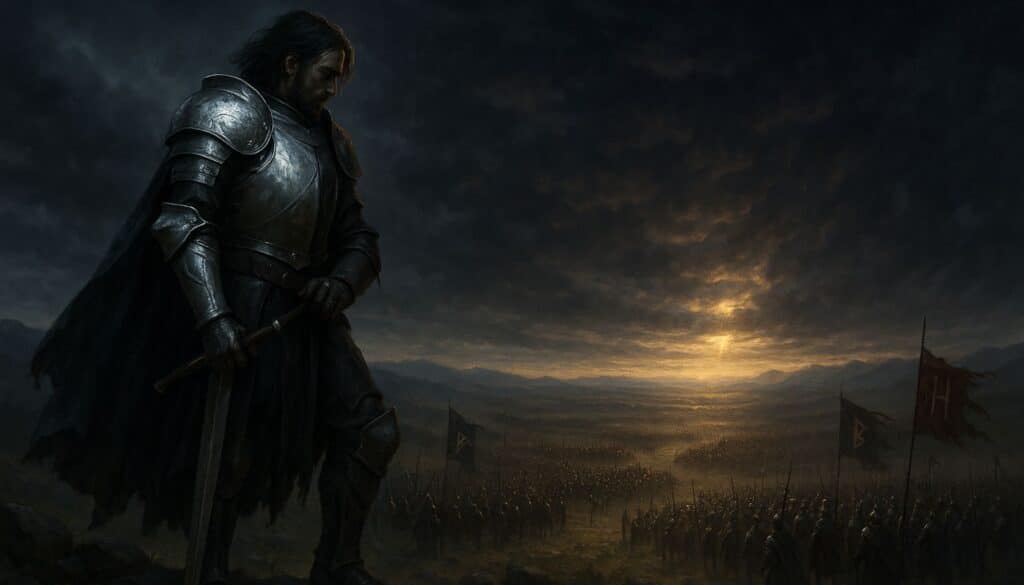
Key Features of Alignment-Based Backstory Generators
Modern alignment-based backstory generators operate as digital architects, supplying much more than simple character outlines. The best among them prompt intricate questions and demand specific answers, dragging users out of complacency. They rarely settle for surface-level motivation, instead forcing moral complexity to the forefront, presenting situations only a Lawful Good, Chaotic Evil, or True Neutral mind could have navigated in a particular way. This kind of interrogation grounds every generated story in believable struggle, contradiction, and consequence.
Sophisticated generators usually offer categorized prompts for formative events: the moment of lost innocence for a Neutral character, the boundary-crossing rebellion of the Chaotic, or the dignity of sacrifice for the Good. Many tools integrate branching histories, tracking how core alignment informs initial responses and then doubles down on repercussions. Through repeated choices, players witness their alignment tested and deepened, forming a personal canon of victories, failures, and haunted decisions that can fuel in-game tensions for entire campaigns.
Detailed trait lists separate these generators from their generic cousins. Instead of tossing out tired virtues and vices, they craft alignment-specific quirks, irrationalities, and psychological wounds. A Lawful Evil backstory may suggest a family heritage of rigid traditions twisted by secret cruelty, while a Chaotic Good generator might detail acts of rogue heroism against a corrupt regime. The personal myth grows layered and unique, anchored to a world where ethics are not abstract, but lived and suffered.
These generators are indispensable for both ends of the player spectrum. Novices learn the texture of alignment; how Lawful does not simply mean lawful, but also means principled, stubborn, even tragic. Seasoned roleplayers, meanwhile, delight in ready-made complications or prompts for unexpected growth, leveraging the generator as a wellspring for surprise and reinvention. Regardless of experience, the result is a cast of characters ready to collide, betray, redeem, or lose themselves with consistent internal logic.
| Generator Name | Alignment Options | Notable Features | Best For |
|---|---|---|---|
| Mythic Paths | All nine core alignments | Branching events, formative consequences, secret shames | Advanced |
| Law & Chaos Forge | Lawful/Neutral/Chaotic with subtypes | Faction development, civic vs. rural prompts, ritual scars | Intermediate |
| The Gygax Engine | All core alignments plus “Shaded” | Dilemma-focused, ambiguous outcomes, familial strife | Advanced |
| FastTrack Align | Good/Neutral/Evil only | Quick-start story, single major life event | Beginner |
| Morality Matrix | All nine core alignments | Psychological wound generator, moral paradoxes | Intermediate |
| Legacy Loom | Lawful vs. Chaotic, shades of intent | Generational conflict, recurring nemesis, coded oaths | Advanced |
| SparkPersona | All core alignments | Relationship prompts, secret vices, characterization cards | Beginner |
| Alignment StoryCrafter | All nine alignments | Reputational fallout, alignment-shifting moments | Intermediate |
Alignment-based generators streamline what can otherwise feel like a daunting or muddled task: crafting a character whose every action rings true. They transform nebulous intentions into concrete, playable traits and histories. Creative tangents find their anchor in the unyielding rules of alignment, and players can focus their energy on the fun and mess of roleplay, not simply on justifying every choice in hindsight.
At the table, these tools double as educational resources, making abstract alignment categories tangible. They illuminate consequences, risks, and tensions, helping both GMs and players predict and interpret character arcs. For those who understand game mechanics but grapple with narrative, generators become a bridge to deeper immersion and more satisfying play. No longer does the party founder on vague motivations or lost backstory threads.
Consistency is the first gift these tools offer, but their creative value runs deeper. With every generated revelation, players build conviction in their choices, roleplay internal struggle, and surprise themselves with organic growth. Party cohesion and drama both benefit, as everyone operates from a foundation as sturdy as it is nuanced.
Treat alignment-based generators as more than time-savers. Exploit their lists, prompts, and hypothetical crossroads as launchpads for invention and collaborative tension. The mechanical skeleton is only the start; the flesh, heart, and nervous system of your character will emerge with every decision you make as you play.
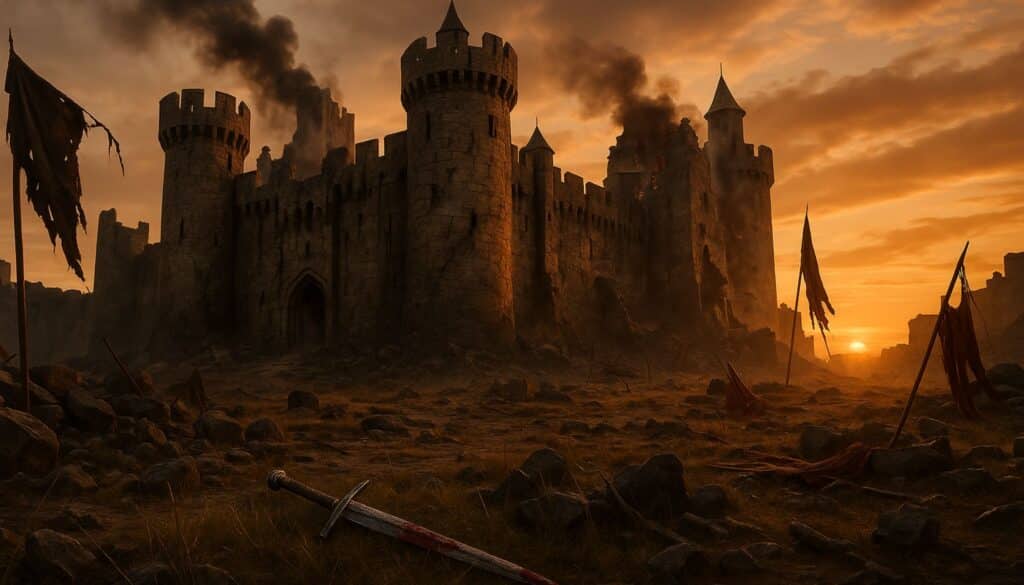
Crafting Morally Complex Characters: Examples by Alignment
Wielding the power of alignment-driven generators, creators forge characters who live haunted by contradiction, burdened by history, and torn by value systems they cannot easily escape. In this world, a Lawful Neutral magistrate might enforce arcane codes with pitiless precision, only to slip into tender, secret mercy for one outcast youth whose life mirrors her own lost innocence. Meanwhile, a Chaotic Evil artificer could relish the entropy of broken machines and ruined lives, yet long, in unguarded moments, for the trust he destroyed in a forgotten friend. In these stories, the generator’s handiwork leaves fingerprints everywhere.
Consider the Lawful Good warlock whose power stems not from moral turpitude, but a desperate pact pledged to save a kingdom from civil war. Her alignment echoes not as blind adherence to rules, but as the agonizing choice to uphold the greater good, no matter the personal cost. The generator frames formative regret, providing ongoing plot hooks for redemption, revenge, or moral collapse.
⚔️ Fantasy RPG Random Tables Books
Make life as a Gamemaster easier…
If you play Dungeons & Dragons, Pathfinder, or other fantasy RPGs, this
RPG random tables series
is packed with encounters, NPCs, treasure, and more. Available in eBook or print—either way, you’ll have a wealth of adventure ideas at your fingertips.
Another example: a Neutral Evil bard, banished for sedition, who composes subversive anthems to incite rebellion. His signature song sparked a massacre, yet his lyrics now serve as rallying cries for factions he cannot control. The generator weaves backstory estrangement, inherited enmity, and uncomfortable reputation, all steered by the cool logic of self-interest and opportunistic alliances.
An adventurous Chaotic Neutral monk grows up in the shadow of shifting city borders, never learning to trust in law or order. Pressed by the generator, she recalls a formative betrayal, stealing a sacred relic not for gain, but to upend tradition’s grip over her people. Her journey twists into restless wandering, drawn to topple institutions wherever she walks, propelled by a compulsion to test boundaries, a thread bound tightly around her alignment, then spun through every major choice on the road.
Each story transcends mere label. The tension between alignment and experience bleeds into every corner of gameplay: surprise alliances, fraught party decisions, uneasy truces, and the slow erosion or hardening of virtue or vice. Players find themselves debating, struggling, risking, invigorated by backstories birthed directly from alignment and its living contradictions. The game world itself responds, sculpted by the personalities and ethics at its heart. Immersion deepens, and campaign narratives ache with dramatic heft.
| Alignment | Example Backstory Element | Narrative Impact on Gameplay |
|---|---|---|
| Lawful Good | Made an oath that forced a personal sacrifice | Creates plot tension and motivates redeeming acts |
| Neutral Good | Secretly protected a rival from assassination | Provides unexpected allies and story revelations |
| Chaotic Good | Toppled a local tyrant against party’s better judgment | Fuels unpredictable choices and moral debates |
| Lawful Neutral | Betrayed a friend to uphold city law | Adds remorse and loyalty conflict |
| True Neutral | Chose inaction in the face of injustice | Sparks philosophical dilemmas, group distrust |
| Chaotic Neutral | Stole from own temple to break tradition | Incites division with institutions and party |
| Lawful Evil | Manipulated laws to destroy a rival family | Enables complex antagonism and intrigue |
| Neutral Evil | Sold out comrades for personal profit | Drives self-serving plots and friction |
| Chaotic Evil | Incited a riot to escape capture | Generates chaos and shifting party dynamics |
Players and DMs quickly discover: the most satisfying campaigns are the ones where history and alignment conspire to pull the rug out from under everyone’s expectations. Plots thicken, relationships fracture or strengthen, motivations become both clearer and more tangled. The backstory generator, when used with curiosity and respect, plants the seeds for this ongoing harvest.
Alignment-focused backstories invite every player to lean into uncertainty and contradiction. Group stories grow stickier and richer, as choices once dictated by dice rolls now pulse with personal reason. Immersion leaps, and stakes rise, not only for the character, but for the world they warp and are warped by.
Advantages and Limitations of Alignment-Based Generators
No tool is perfect, and alignment-based generators display both marked strengths and thorny limitations. Their most tangible advantage lies in speed and structure: a struggling player facing a blank screen receives a cascade of prompts, dilemmas, and formative events, each adjusted to fit their alignment choice. Stories become instantly playable, and characters step into the world feeling as though they belonged there all along.
Many creators praise the clarity and cohesion offered by these generators. Not only do the tools keep characters “on brand,” but they also help groups avoid disruptive inconsistencies! No more Lawful Good clerics breaking oaths on a whim or Chaotic Evil thieves developing sudden, unexplained charity. At the same time, prompts push players to consider angles they might otherwise miss: how would a True Neutral monk react to the collapse of their temple? What scars does a Lawful Evil merchant wield as both warning and invitation?
Try my AI Tabletop RPG generators...and an extensive library of content!
Yet, these generators sometimes incite criticism for narrowing the field of creative possibility. Over-reliance on prescribed options risks producing formulaic characters, repetitive family tragedies, uninspired betrayals, or bland redemption arcs that feel cut from the same cloth. The very structure that gives coherence can, if left unchecked, render stories rigid, predictable, or lacking the quirks that make characters memorable. Some players bristle at being encouraged to “play to type,” craving more freedom to break the mold.
The solution lies in mindful integration. Treat the generator as a collaborator, not a taskmaster. Pull rich details, discard what rings false, remix and reshape as needed. Allow your creativity to interpret, subvert, or expand on the foundations provided. Generators thrive when treated as a springboard, a launch into new narrative territory, not a fence enclosing it.
Advantages:
- Rapid inspiration for character creation, avoiding empty-page block
- Alignment clarity and roleplay consistency from the start
- Cohesive, believable backstory structure
- Prompts for formative moral events and character-defining choices
- Reduction in party conflict over inconsistent behavior
- Enhanced immersion and party coherence
- Educational for new players unfamiliar with alignment mechanics
- Tools for GMs to predict character responses and plan session hooks
- Ability to customize or modify prompts for unique needs
- Stimulates ideas for growth, betrayal, or redemption arcs
- Consistent tone and theming across party or campaign
Limitations:
- Risk of formulaic or repetitive stories
- Overly restrictive narrative boundaries
- Difficult to produce uniquely nuanced or subversive characters
- May fail to capture rare or unconventional alignment combinations
- Some prompts may not fit player’s intended vision
- Can stifle creative risk-taking if relied on exclusively
- Potential for group homogeneity if everyone uses the same generator
- Backstories may lack the personal weirdness of wholly original invention
- Not all generators equally support all play styles or campaign themes
- Occasional disconnect between generator output and GM’s world detail
- Some tools lack update support or varied content
Generators, wisely harnessed, multiply creativity. Adopt them as collaborators, partners in invention and world-building, not as end-all authorities. Use generated backstories as rich compost for your own seeds of personal myth, trimming, grafting, and expanding wherever inspiration strikes.
Integrate these tools as just one ingredient in your broader creative cauldron. Let the sparks they throw illuminate paths you hadn’t considered, but never let them dictate who your character is at the table. The best stories balance guidance and freedom, structure and wild invention.
Tips for Using Alignment-Based Backstory Generators Effectively
Approach alignment-driven generators as an artist would a palette, not a paint-by-numbers kit. Start with the prompts, a dozen formative traumas, betrayals, victories, or choices locked to alignment, and select what resonates most strongly. Combine the generator’s ideas with personal vision, weaving together multiple traits or events to sketch a story as unpredictable as it is grounded.
Customization is not just possible, it’s vital. When a generator suggests a familial rivalry, twist it into a cultural taboo or professional stumbling block that only your character carries. Use prompts as scaffolding for campaign-specific needs, adjusting details to fit the world’s lore or your GM’s tonal preferences. Never shy away from bending, blending, or breaking generated content for the sake of originality or deeper narrative surprise.
Keep character development fluid. A strong alignment-based backstory should launch, not limit, future growth. Incorporate moments of uncertainty, inner conflict, or shifting loyalty; room for redemption, corruption, exhaustion, or ideological rebirth. If a prompt suggests Lawful Neutral stoicism, consider what crisis could crack that veneer, or what relationship might soften the shell. Write with transformation in mind.
Always re-center alignment in play, but not at the expense of fun or spontaneity. Use generated histories as moral compasses, not cages. Characters change, after all: the most satisfying arcs are those that challenge core alignments, not just express them. When play inevitably introduces contradictions or chaos, let tension spark evolution rather than stasis. The generator’s best gift is a living starting point.
Twelve Practical Tips for Maximizing Alignment-Based Generators:
- Blend multiple prompts for a richer, less predictable backstory
- Revise or reframe generated content to fit personal character vision
- Combine elements from different alignment axes for complexity
- Adjust details to better fit the campaign setting or GM’s themes
- Add unique “wildcard” events not found in the generator
- Share generated backstories with party and GM for campaign integration
- Use generator results as inspiration for session zero conversations
- Be willing to discard prompts that don’t fit or feel stale
- Focus on formative events that can recur or be referenced in play
- Keep room for alignment growth, contradiction, and development
- Supplement generated events with your own secrets or ambitions
- Draw detailed connections between generated NPCs and campaign world
- Return to the generator mid-campaign for flashbacks or retconning
- Allow generated flaws or traumas to color relationships and party dynamics
Heartbeat stories emerge from a balance of structure and adaptation. Embrace the generator’s guidance enthusiastically, but always make time for reflection and creative interference. Adapt, personalize, and own every aspect of your character’s mythos, whether it starts in algorithm or existential dread.
Great D&D characters do not spring fully-formed from even the most sophisticated generator. They grow, warp, and rebel across sessions, becoming truer versions of themselves each time you breathe life into a decision, a contradiction, or a radical act of mercy or betrayal.
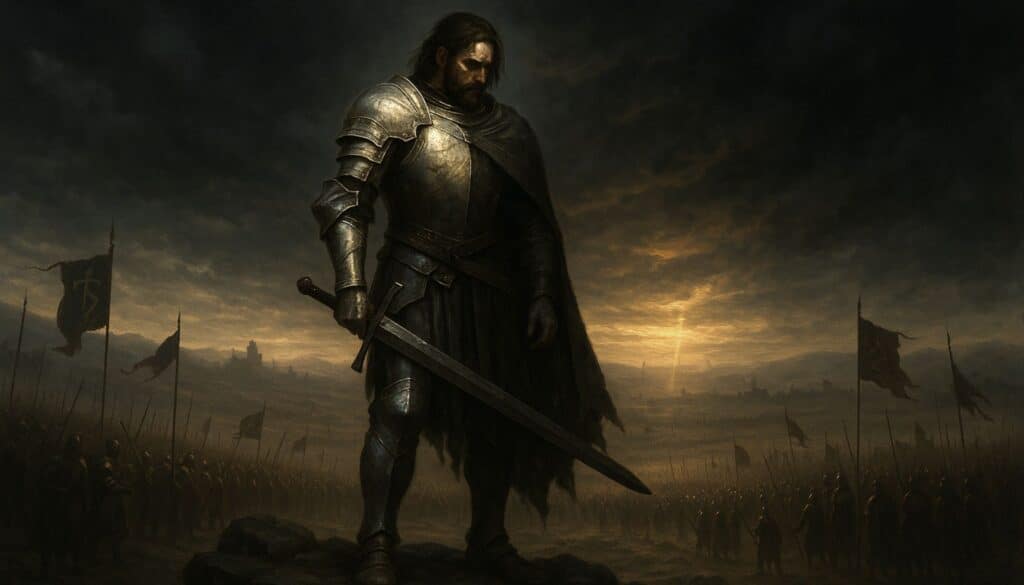
Best Alignment-Based Backstory Generators: Recommendations
LitRPG Adventures, crafted by veteran LitRPG author Paul Bellow, emerges as one of the most robust, alignment-savvy backstory generators currently available. Rather than offering cookie-cutter templates or recycled fantasy fodder, LitRPG Adventures stands out for the intelligence and nuance of its AI-powered storytelling engine. Rooted in the heart of D&D tradition but reaching for the narrative complexity of modern speculative fiction, this tool wields alignment as both structure and lens, helping users craft characters whose motivations pulse with psychological depth. Within its digital citadel, the generator beckons both newcomers and narrative artisans to experiment with Law, Chaos, Good, Evil, and the shifting sands between.
Where most online generators skim the surface of alignment, Paul Bellow’s creation tunnels deep. Players can select from the nine-point alignment matrix—Lawful Good, Chaotic Neutral, Neutral Evil, and beyond—then watch as the system seeds their character’s life with key events, conflicting values, and the subtle wounds or secrets that push ordinary fantasy tropes into the territory of what Bellow calls “story hooks with teeth.” Tools within LitRPG Adventures let you tweak foundational choices, flavor formative traumas, and remix everything from quirks to deadly regrets, ensuring that each output remains alive to the needs of the campaign, the temperament of the table, and the unique vision of its user.
Ease of customization and the volume of prompts push LitRPG Adventures near the apex for both depth and accessibility. Whether you want your Lawful Evil mage’s rise to be marked by brutal honor duels or prefer your Chaotic Good ranger to battle endemic injustice and inner cynicism, the system adapts, tossing you alignment-grounded crises, mentors, enemies, and unresolved tensions at every turn. The generator’s flexibility shines too, allowing even first-time players to nudge, rewrite, or blend output until they’re not just ticking an alignment box, but birthing a character who could conceivably grow, fail, or even shift alignment as the campaign unfolds.
LitRPG Adventures’ secret weapon is its seamless integration between the philosophical and the personal. Not content to churn out cut-and-dried warriors or orphans-for-hire, it asks questions: What shaped your code? Who did you betray to rise? Where did mercy cost you dearly? Its menus become invitations to wrestle with consequence. The stories that emerge often bristle with paradox, making them feel as if they belong in the pages of a well-loved campaign journal or the next LitRPG bestseller.
| Generator Name | Alignment Depth | Customization Level | Overall Recommendation |
|---|---|---|---|
| LitRPG Adventures | Detailed | High | Highly Recommended |
| LitRPG Adventures: NPC | Detailed | High | Highly Recommended |
| LitRPG Adventures: Magic | Detailed | Medium | Recommended |
| LitRPG Adventures: Quest | Detailed | High | Highly Recommended |
| LitRPG Adventures: Tavern | Basic | Medium | Recommended |
| LitRPG Adventures: Encounters | Detailed | High | Highly Recommended |
| LitRPG Adventures: Loot | Basic | Medium | Recommended |
| LitRPG Adventures: Shops | Basic | Low | Good for Beginners |
| LitRPG Adventures: Monsters | Detailed | Medium | Recommended |
| LitRPG Adventures: World | Detailed | High | Highly Recommended |
For DMs and party members craving not just speed but also substance, LitRPG Adventures becomes a narrative forge. It cuts down time spent wrestling with blank slates, yet refuses to hand you empty shells—every result demands engagement and personalization. The layered alignment options mean every session starts with a foundation strong enough to withstand dramatic shocks, party conflict, or unexpected character growth.
At its core, LitRPG Adventures stands as living proof that algorithmic storytelling can coexist with—and even catalyze—human creativity. Paul Bellow’s vision combines cutting-edge AI with the age-old hunger for meaningful, surprising stories. Players would be wise to mine its trove for the rarest gems, then cast those treasures into the bright, uncertain fire of campaign play. Let it guide your hand, but let your imagination drive the final, unforgettable shape.
⚔️ Fantasy RPG Random Tables Books
Make life as a Gamemaster easier…
If you play Dungeons & Dragons, Pathfinder, or other fantasy RPGs, this
RPG random tables series
is packed with encounters, NPCs, treasure, and more. Available in eBook or print—either way, you’ll have a wealth of adventure ideas at your fingertips.

Final Thoughts on Alignment-Based Backstory Generation
Alignment stands as one of the oldest pillars in the D&D mythos. Its continued relevance comes less from tradition, and more from its capacity to infuse characters with tension, crisis, and believable purpose. Good stories thrive on contradiction, on choices born from crisscrossed lines between law and chaos, altruism and selfishness, compassion and violence. Alignment, properly wielded, transforms stock archetypes into actors of genuine unpredictability and depth.
Alignment-driven generators offer players and GMs a head start on this journey. At their best, they keep everyone honest, rooting action in history, and history in a worldview earned through struggle. These tools help new players avoid common missteps: bland justification, erratic motivation, or the boredom of playing to type without ever understanding why. For veterans, they serve as partners in invention, tossing curveball prompts or moral dilemmas precisely when inspiration wavers.
Yet, every memorable character is a negotiation between structure and imagining them anew. Alignment exists not to trap, but to launch. Characters freed from pure mechanical description ascend beyond their alignment beginnings. The best campaigns sing because someone turns a Lawful oath into a curse, or a Chaotic act into sacrifice, or a hint of Evil into the fractal complexity of remorse.
Trust your creative instincts. Use generators as springboards, not summary judgments. Every alignment-based prompt is a provocation, not a prison. Break, twist, or expand on the stories suggested. Play with alignment the way a poet plays with form, first mastering its demands, then subverting them with intent.
In the end, table stories are a collective ritual, a round-robin myth invented anew each session. Generators exist to stoke that fire, not to contain it. Embrace them as you would any magic that shapes the imagination. Through alignment, personal paradox, and the razor’s edge between invention and tradition, D&D remains a laboratory for the stories that matter most.
Let alignment be your guide, not your D&D dictator! Unlock the doors, adjust the lighting, rearrange the furniture, and fill your campaign with lives worth risking and truths worth uncovering. After all, a great story finds its soul in the cracks between law and chaos, daring you to step across.

